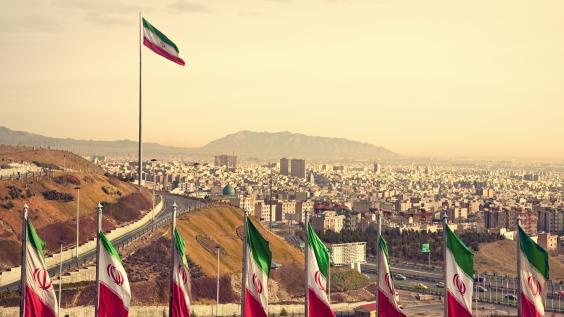Two Cheers for the Nuclear Deal With Iran

Table of Contents
Author(s)
The interim agreement over Iran’s nuclear program is welcome if not earth-shattering news. The deal — struck between Tehran and the so-called P-51 — is essentially a straightforward quid pro quo: Iran agrees to limited constraints on its nuclear program in return for a partial suspension of economic sanctions. Voice of America provides a useful summary:
“Iran will have to destroy its entire stockpile of near weapons grade uranium, stop production of even lower enriched uranium, stop construction and installation of centrifuges used to enrich uranium, and freeze construction of a new reactor that could produce plutonium, another nuclear bomb fuel. The summary says Iran also agreed to unprecedented inspections to ensure compliance.
“In return, the United States says the international community will not impose any new economic sanctions for the six-month duration of the accord, and will suspend some sanctions on gold and some other precious metals, Iran’s auto industry and its petrochemical exports.
“The main sanctions, on Iran’s oil exports and its financial sector, will remain in place.”
As the summary makes clear, the agreement is both temporary and limited. It is meant to serve as the basis for further negotiation. Future talks are not going to be easy. The sides remain highly suspicious of each other. And there are real substantive differences, notably about Iran’s right, under the Non-Proliferation Treaty, to enrich uranium. But the deal does begin addressing some of our key concerns about Iran’s nuclear program.
The agreement will face deep skepticism or outright opposition in many corners. Doubters will include Israel and Saudi Arabia. Both countries are rightly concerned about the prospect of a nuclear Iran. But they also fear U.S.-Iranian détente will reduce their influence in Washington and, potentially, shift the regional balance of power against them. And there are hardliners in Tehran and Washington equally determined to see the deal scuttled. A number of U.S. congressional leaders — most, though not all, Republican — have already spoken out against the accord. Our own senator, John Cornyn, went so far as to suggest that the interim agreement is a ploy by the White House to distract attention away from the botched Obamacare rollout.
Whether or not negotiations on Iran’s nuclear programs succeed, we should continue talking to Tehran. Keeping lines of communication open, even with adversaries, is helpful: by communicating regularly, we can avoid misunderstandings and identify areas of potential cooperation when they arise. We talked regularly with the Soviet Union throughout the Cold War. Moscow was a far more dangerous adversary than Tehran. Iran is, at best, a regional power of modest military capability and meager diplomatic reach. Iran’s GDP is perhaps 6 percent of our own; Tehran’s military expenditures are even more modest, at 3 to 4 percent of our own defense outlays. Iran may indeed pose challenges to U.S. foreign policy in the Middle East; but little is served by exaggerating the threat it poses.
Still, if a potential deal with Iran can stop or even significantly delay the emergence of Iran as a nuclear power, it is worth cutting. We have enough complications in our policy toward a region where our penchant for military force has cost us thousands of lives and, when the final reckoning is done, trillions of dollars. One less complication is a good thing.
And what of Senator Cornyn’s suggestion? All I can say is: more distractions, please.
Endnotes
1. The United States, Russia, China, United Kingdom, France and Germany; the EU is also deeply involved.
Joe Barnes is the Baker Institute’s Bonner Means Baker Fellow. From 1979 to 1993, he was a career diplomat with the U.S. Department of State, serving in Europe, Africa, the Middle East and South Asia.
This material may be quoted or reproduced without prior permission, provided appropriate credit is given to the author and Rice University’s Baker Institute for Public Policy. The views expressed herein are those of the individual author(s), and do not necessarily represent the views of Rice University’s Baker Institute for Public Policy.



